After Durham County was established by vote of the state legislature in 1881, the first courthouse (and everything else related to the business of the new county) was located in rented space in Stokes Hall, on the northeast corner of Corcoran and West Main St.
The county was soon cramped for space, and by 1883 had begun to plan for additional space. The county erected a small jail and, at county expense, a mayor's office on the southeast corner of Church St. and East Main St, on land donated by Julian Carr and EJ Parrish. (The building may have been the house that was already on the land - sources differ.)
Evidently, prisoners were soon singing and calling to passersby - an early complaint, dating at least to 1885, was voiced when a woman wrote the city complaining of the "profanity and lascivious language." As a result (and at her suggestion), a 10 foot high fence was erected around the property.
By 1889, the county hired Byron Pugin, who had built the Day house on Ramseur St., BN Duke's 'Terrace', the Parrish building, and other early structures to design the courthouse. The initiation of construction was a major event - EJ Parrish's light infantry, the fire hose companies (both African-American and white), all of the movers and shakers, and, of course, the Masons, who performed the "ritual anointing of the cornerstone with oil, wine, and fruits of the field" per Anderson. A convict crew performed the excavation and much of the construction labor, and the brick for the structure was evidently "fired at the County poorhouse."
First County courthouse, looking south-southwest from East Main St.
(Courtesy Duke RBMC - Wyatt Dixon Collection)
The Manufacturers' Record (July 16, 1887) reported that Ellington, Royster, and Company of Raleigh had received the contract to build the courthouse in Durham for $12,000. Their role was confirmed in the Durham Tobacco Plant's account (November 23, 1887) of the cornerstone laying.
The County courthouse had the distinction of having the first sewer pipe in Durham - which carried its effluent down to the tributaries of Third Fork Creek on Pine St. (now Roxboro) south of the railroad tracks. The other rather ignominious distinction of the first courthouse is the fact that two legal hangings took place in its courtyard - one for a man murdering his wife, and the other for "first degree burglary")
Looking east from the corner of Church and East Main, with the first courthouse on the right, 1890s.
(Courtesy Duke Archives).
Looking southeast from East Main St.
(Courtesy Durham County Library)
(Courtesy Duke RBMC - Wyatt Dixon Collection)
By the mid-1910s, space was again at a premium, and the county issued bonds in the amount of $336,466.76 to build a new courthouse. A new neoclassical structure was design by Milburn and Heister to replace the older courthouse on the site. In 1916, another groundbreaking ceremony was held, in which the contents of the original building's cornerstone were placed in the new cornerstone (along with additional items) and the cornerstone was again anointed by the Masons.
Looking southwest, ~1920.
(Courtesy Duke Archives).
Looking southeast, ~1920
(Courtesy Durham County Library)
The jail was located on the top floor of the structure, from which point the prisoners would shout at people passing on the street.
Looking southeast from the northeast corner of Church and East Main., 1940s.
(Courtesy Durham County Library)
By the 1960s, the perpetual question of space had reared its head again, and, after the city destroyed the buildings in the block across the street, the county set about building a brand new courthouse (which as we later learned, was purportedly too small from the moment it was occupied.)
Looking southeast, 1970s
In 1978, that courthouse was completed, and, perhaps because it really was too small to contain the various necessary offices, the 1916 courthouse was retained, and it continues to hold various county offices today. The prisoners no longer shout from the top floor, but I'm still hopeful we can get that effect for the patrons of our new Performing Arts Center.
Looking southwest, 2007.

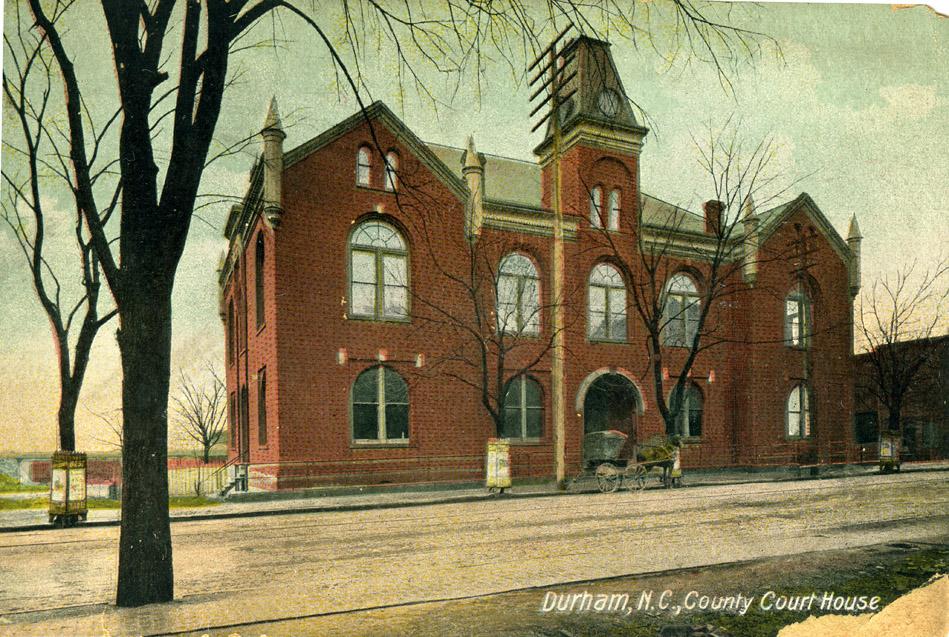
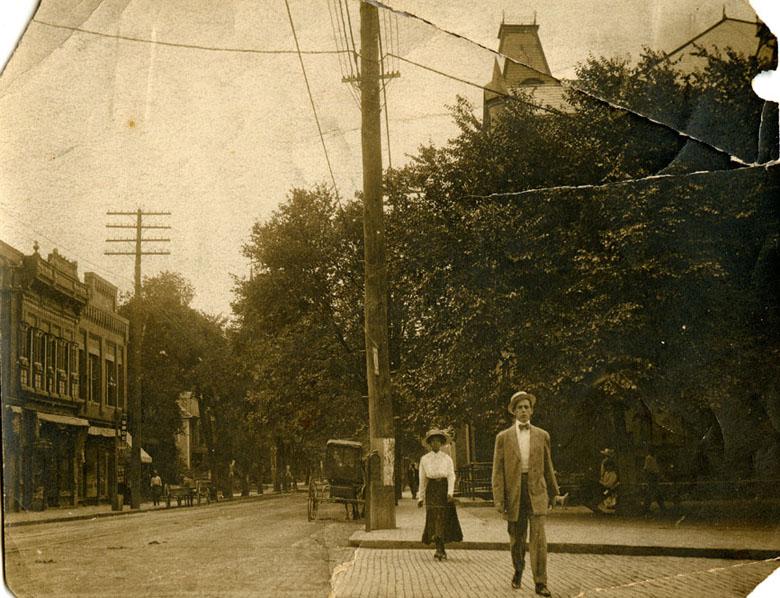
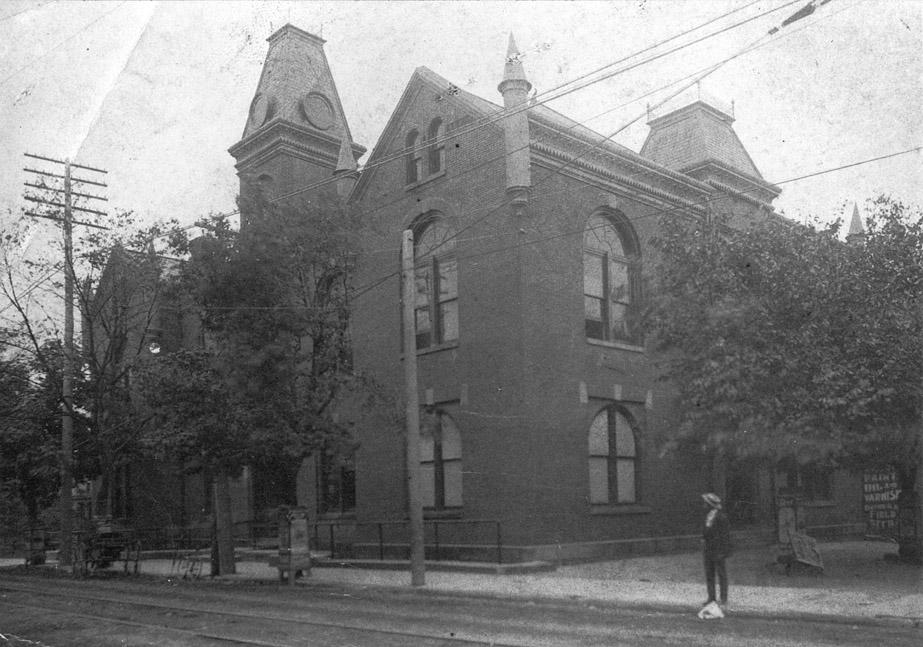
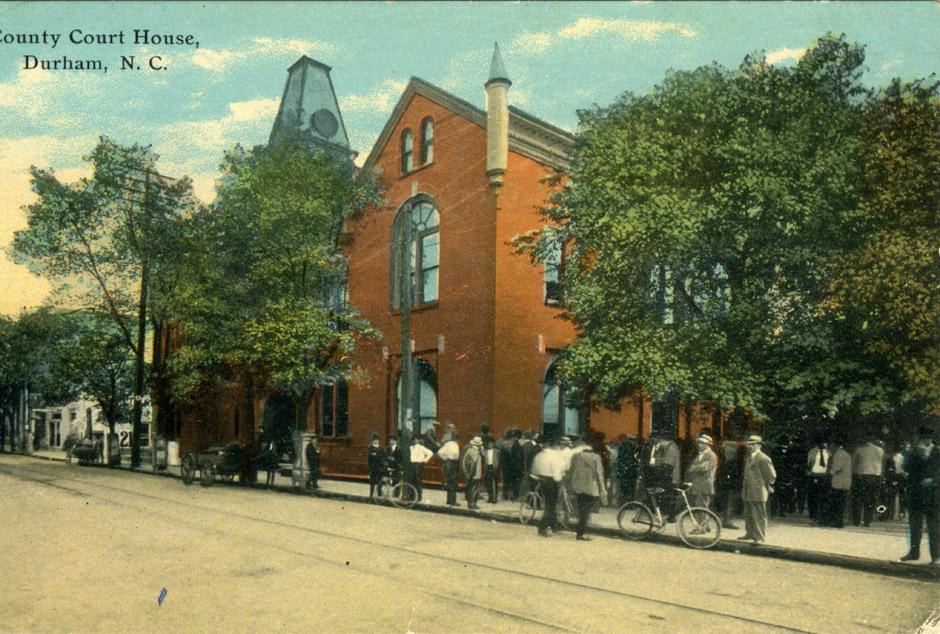
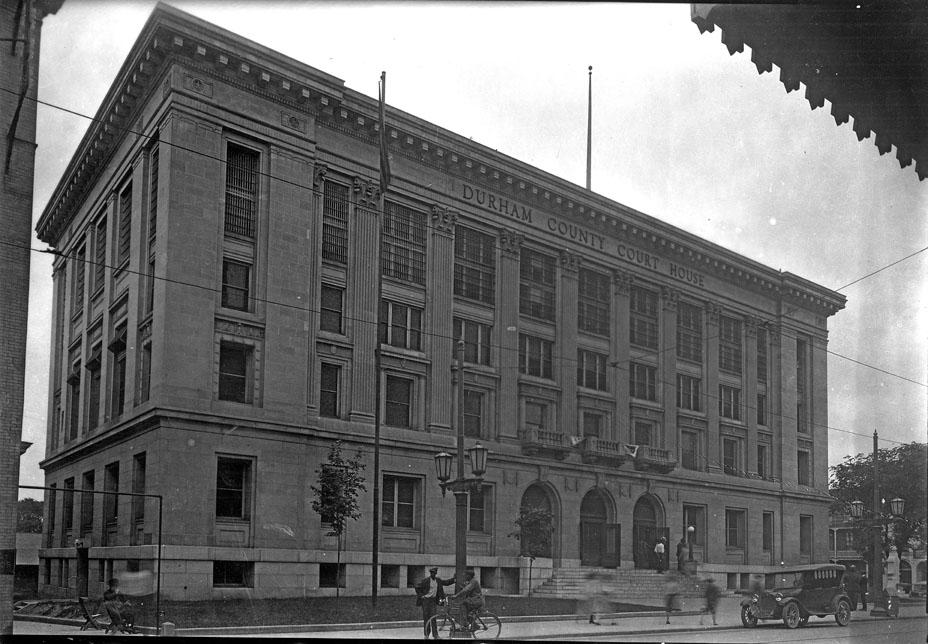

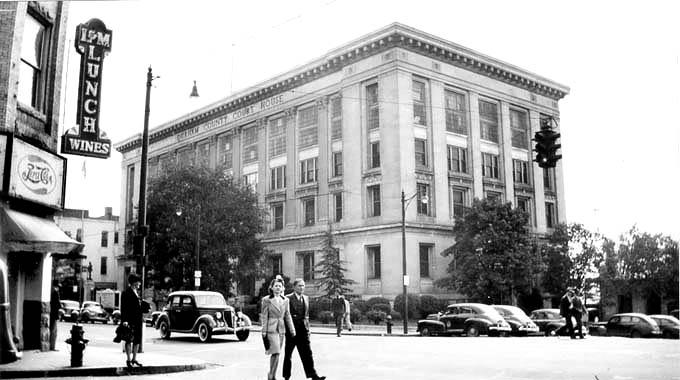

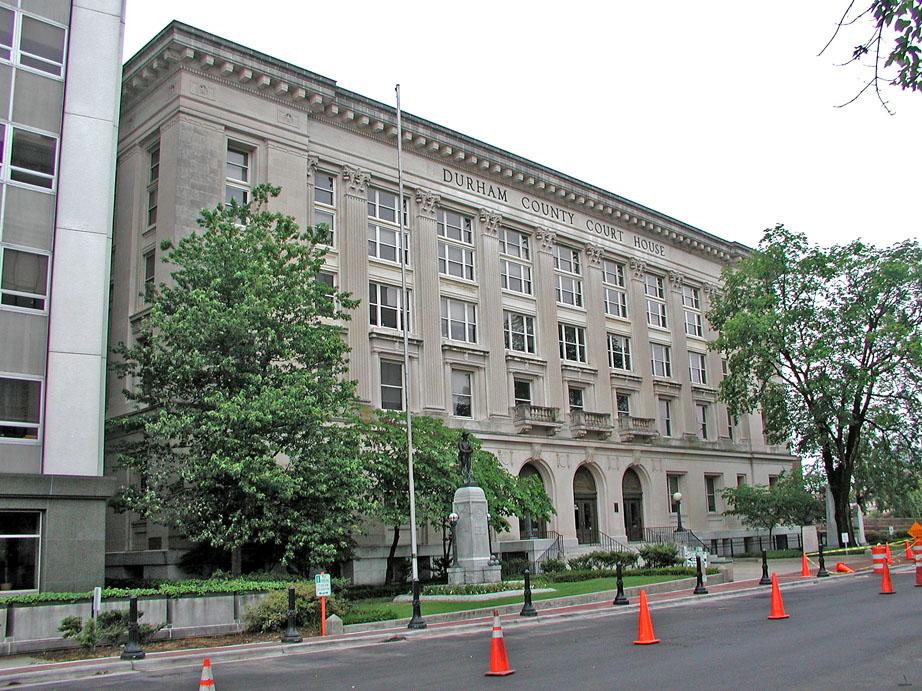
Comments
Submitted by Barry Ragin (not verified) on Fri, 5/25/2007 - 1:21pm
EJ Parrish had his own light infantry?
I need to get in on that program for crossing guards at Roxboro and Knox.
Submitted by Gary (not verified) on Sat, 5/26/2007 - 3:33am
Barry
Sometimes these history bits can be a bit like a wormhole - if I only had the time to follow all the bits that I wanted to follow up on... I read this bit about the "light infantry" and thought - what the...? I'll just have to figure it out at some point.
I could certainly use some light infantry around here at some points as well. It'd be a good posse to have at a Council meeting.
Submitted by Anonymous (not verified) on Sat, 6/2/2007 - 10:36pm
Why would you want prisoners shouting at the patrons of the new Performing Arts Center? It's unlikely they would come back, especially women. I doubt if the windows at the jail can be opened anyway.
Submitted by Gary (not verified) on Sun, 6/3/2007 - 2:03am
It was sarcasm. Why would you locate your performing arts center adjacent to a jail?
Submitted by vespasara (not verified) on Thu, 12/16/2010 - 4:40am
Linthicum & Linthicum, in a 1909 Manufacturers Record, list "Durham County Courthouse and City Market to replace burned." perhaps there was a contest for the best design, and L&L submitted an option...
I've got no doubt that the building you show here is M&H, but any idea what the 'burned' line is about? and the city market?
Submitted by Gary (not verified) on Thu, 12/16/2010 - 12:22pm
Vespasara -
The book is referring to this building - the second iteration of the Academy of Music, which served as the courthouse prior to the construction of either of these buildings - perhaps they were just a bit liberal with their description. Thank you for your comments!
GK
Submitted by vespasara (not verified) on Thu, 12/16/2010 - 8:12pm
ah, that makes a lot more sense. and that second Academy seems more Linthicum & Linthicum than some of the others. I'm doing my best to build up a real property list for them - there's a lot of stuff that's been demolished, of course, and many things that just never were attributed to anyone...
thanks for filling me in!
Add new comment
Log in or register to post comments.